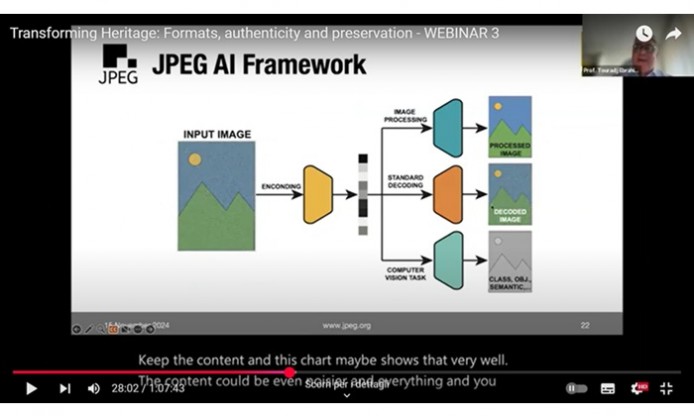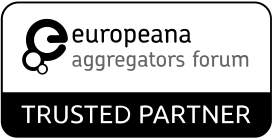img. from EUreka3D webinar on formats 15/11/2024, where the JPEG convenor prof. Touradj Ebrahimi discussed JPEG AI among others.
The JPEG Committee is pleased to announce that JPEG AI, the first specification for end-to-end learning-based image coding, has now officially been adopted as an International Standard by ISO, IEC and ITU. This achievement marks a significant milestone in the field of digital imaging and compression, offering a new approach for efficient, high-quality image coding for storage and transmission. The scope of JPEG AI is the creation of a learning-based image coding standard offering a single-stream, compact compressed domain representation, targeting both human visualization, with significant compression efficiency improvement over image coding standards in common use at equivalent subjective quality, and effective performance for image processing and computer vision tasks, with the goal of supporting a royalty-free baseline.
The JPEG AI standard leverages deep learning algorithms that learn the best way to compress images from vast amounts of image data, allowing them to adapt to a wide range of content, and offering enhanced perceptual visual quality and faster compression capabilities. The key benefits of JPEG AI are:
1. Superior Compression Efficiency: achieves higher compression efficiency leading to reduced storage requirements and faster transmission times compared to other state-of-the-art image coding solutions.
2. Implementation-friendly coding: the codec supports a wide array of devices with different characteristics, including mobile platforms, through optimized coding processes.
3. Compressed domain image processing and computer vision tasks: JPEG AI’s architecture enables multi-purpose optimization for both human visualization and machine-driven tasks.
By creating the JPEG AI International Standard, the JPEG Committee has opened the door to more efficient and versatile image compression solutions that will benefit industries ranging from digital media and telecommunications to cloud storage and visual surveillance. This standard provides a framework for image compression to support rapidly growing visual data demands, enabling more efficient storage, faster transmission, and higher-quality visual experiences across a wide range of applications, from mobile devices to AI-driven processing technologies.
Read more: https://jpeg.org/about.html


